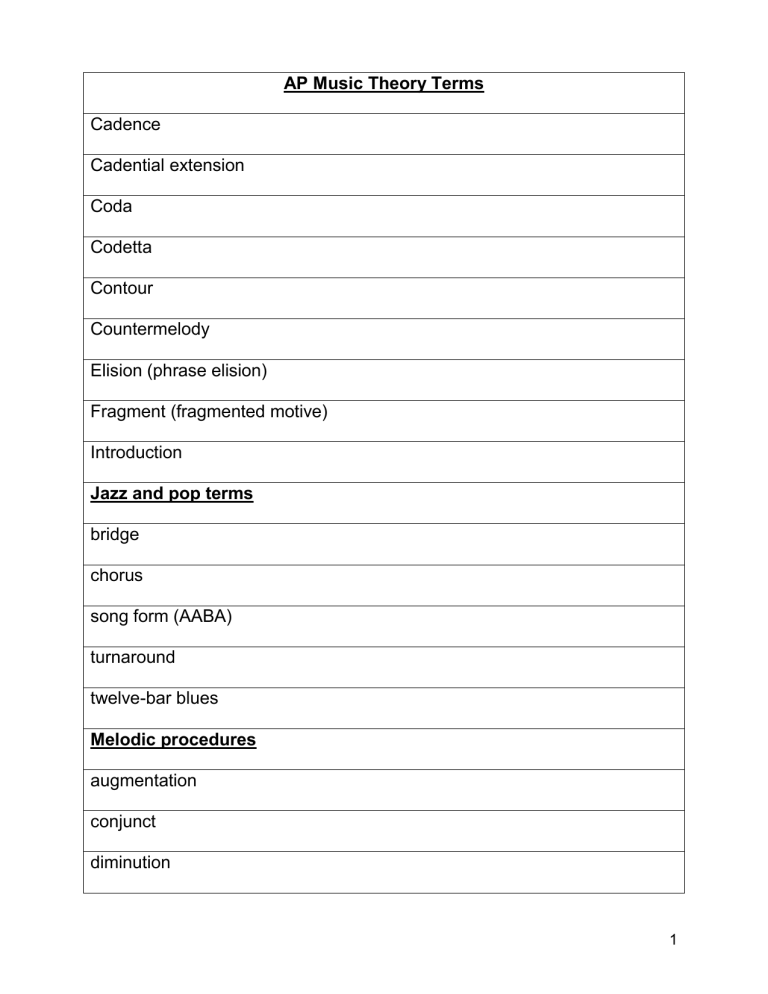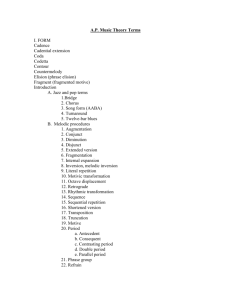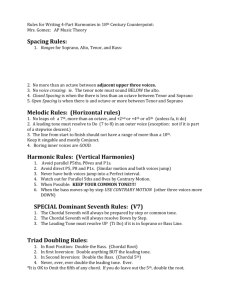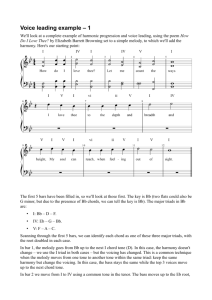AP Vocab List

AP Music Theory Terms
Cadence
Cadential extension
Coda
Codetta
Contour
Countermelody
Elision (phrase elision)
Fragment (fragmented motive)
Introduction
Jazz and pop terms bridge chorus song form (AABA) turnaround twelve-bar blues
Melodic procedures augmentation conjunct diminution
1
disjunct extended version, phrase extension fragmentation internal expansion inversion, melodic inversion literal repetition motivic transformation octave displacement retrograde rhythmic transformation sequence sequential repetition shortened version transposition truncation
Motive
Period antecedent consequent contrasting period
2
double period parallel period
Phrase group
Refrain
Small forms binary rounded binary ternary
Solo, soli
Stanza
Strophic
Theme thematic transformation
Through-composed
Tutti
Variation
Verse
3
Cadence Types
Authentic imperfect authentic perfect authentic
Conclusive cadence
Deceptive
Half
Phrygian half
Inconclusive cadence
Plagal
Chord Quality
Triads augmented or + diminished or ø major or M minor or m
Seventh chords major seventh (MM; M7) (“major-major”) dominant seventh (Mm7) (used for major-minor seventh chords exercising a dominant function)
4
major-minor seventh (Mm7) (same quality as dominant seventh without denoting function) minor seventh (m7; mm) (“minor-minor”) halfdiminished seventh (Ø7; dm) (“diminished-minor”) fullydiminished seventh (ø7; dd) (“diminished-diminished”)
Functions and Progressions
Scale degrees/diatonic chord names tonic supertonic mediant subdominant dominant submediant subtonic leading tone
Functions tonic function dominant function predominant function
5
Circle of fifths
Deceptive progression
Harmonic rhythm
Modulation common tone modulation phrase modulation pivot chord modulation
Neighboring chord
Rate of harmonic change
Realize, realization of a figured bass, realization of a four-part Roman numeral progression
Retrogression
Secondary dominant
Secondary leading tone chord
Tonicization
Treatment of second inversion ( 6/4 ) triads
6
Arpeggiating 6/4 —a 6/4 created by arpeggiation of the triad in the bass
Although it contains the notes of the tonic triad, it does not exercise a tonic function but rather serves as an embellishment of the dominant. It occurs in a metrically stronger position than the dominant, and the upper voices most often move by step to the tones of the dominant.
May also be written as V6/4 • 5/3 , including the resolution of the cadential
6/4 to the dominant
Neighboring or pedal 6/4 (embellishing 6/4, auxiliary 6/4 ) —occurs when the third and fifth of a root position triad are embellished by their respective upper neighboring tones, while the bass is stationary, usually occurring on a weak beat
Passing 6/4 —harmonizes the second note of a three-note ascending or descending scale fragment in the bass; that is, it harmonizes a bass passing tone. The usual metric placement is on an unaccented beat and the motion of the upper voices is ordinarily by step
Nonharmonic Tones
Anticipation
Appoggiatura
Embellishment
Escape tone (échappeé)
7
Neighboring tone (auxiliary tone, embellishing tone, neighbor note) double neighbor lower neighbor upper neighbor neighbor group (cambiata, changing tone, changing note)
Ornament
Passing tone (accented, unaccented)
Pedal point
Preparation
Resolution
Retardation
Suspension rearticulated suspension suspension chain
8
Spacing/Voicing/Position
Alto
Bass
Close position
Doubling
First inversion
Inversion, inversion of chords
Open position
Root
Root position
Second inversion
Soprano
Tenor
Third inversion
Voice Leading
Common tone
Contrary motion
Cross relation (false relation)
Crossed voices (voice crossing)
Direct fifths (hidden fifths)
9
Direct octaves (hidden octaves)
Oblique motion
Overlapping voices
Parallel motion
Parallel intervals objectionable parallels parallel fifths parallel octaves
Similar motion
Tendency tone
Unresolved leading tone
Unresolved seventh
Voice exchange
Miscellaneous Harmonic Terms
Arpeggio, arpeggiation
Chromatic
Common Practice Style
Consonance
Diatonic
Dissonance
10
Figured bass
Flatted fifth
Lead sheet
Picardy third
Resolution
Intervals
Compound interval
Half step (semitone)
Interval
Inversion, inversion of an interval
Numerical names (i.e., third, fifth, octave)
Quality or type (e.g., perfect, major, minor, diminished, augmented)
Tritone
Unison (prime)
Whole step (whole tone)
11
Performance Terms
Antiphonal
Articulation arco legato marcato pizzicato slur staccato tenuto
Call and response
Dynamics crescendo diminuendo terrace dynamics pianissimo pp piano p mezzo piano mp mezzo forte mf forte f
12
fortissimo ff
Improvisation, improvisatory
Phrasing
Tempo adagio allegro andante andantino grave largo lento moderato presto vivace accelerando ritardando ritenuto rubato
13
Rhythm/Meter/Temporal Organization
Accent agogic accent dynamic accent metrical accent
Anacrusis (pickup; upbeat)
Asymmetrical meter
Augmentation
Bar line
Beat
Beat type compound simple
Changing meter (multimeter)
Cross rhythm
Diminution
Dot, double dot
Dotted rhythm
Duplet
Duration
14
Hemiola
Irregular meter
Meter duple quadruple triple
Note value
Polyrhythm
Pulse
Rhythm
Swing rhythm
Syncopation
Tempo
Tie
Time signature (meter signature)
Triplet
Scales/Keys/Modes
Accidental
Chromatic, chromaticism
Diatonic
15
Key signature
Major
Minor harmonic minor melodic minor, ascending/descending natural minor (Aeolian)
Mode
Ionian
Dorian
Phrygian
Lydian
Mixolydian
Aeolian
Locrian
Modality
Parallel key, parallel major or minor
Pentatonic
Relative key, relative major or minor
Scale degrees
16
tonic ^1 supertonic ^2 mediant ^3 subdominant ^4 dominant ^5 submediant ^6 leading tone ^7
Tetrachord
Tonal
Tonality
Tonic
Whole-tone scale
17
Text/Music Relations
Lyrics
Melismatic
Stanza
Syllabic
Texture
Alberti bass
Canon
Canonic
Chordal accompaniment
Contrapuntal
Counterpoint imitation imitative polyphony nonimitative polyphony countermelody fugal imitation
Heterophony, heterophonic
Homophony, homophonic chordal homophony
18
chordal texture (homorhythmic) melody with accompaniment
Instrumentation brass continuo percussion rhythm section strings timbre woodwinds
Melody
Monophony, monophonic
Obbligato
Ostinato
Polyphony, polyphonic
Register
Solo, soli
Tessitura
Tutti
Walking bass
19
Other terms that may be used on the AP Music Theory Exam
Aria
Art song
Concerto
Fugue
Genre(s)
Interlude
Opera
Prelude
Postlude
Sonata
Song
String quartet
Symphony
20





